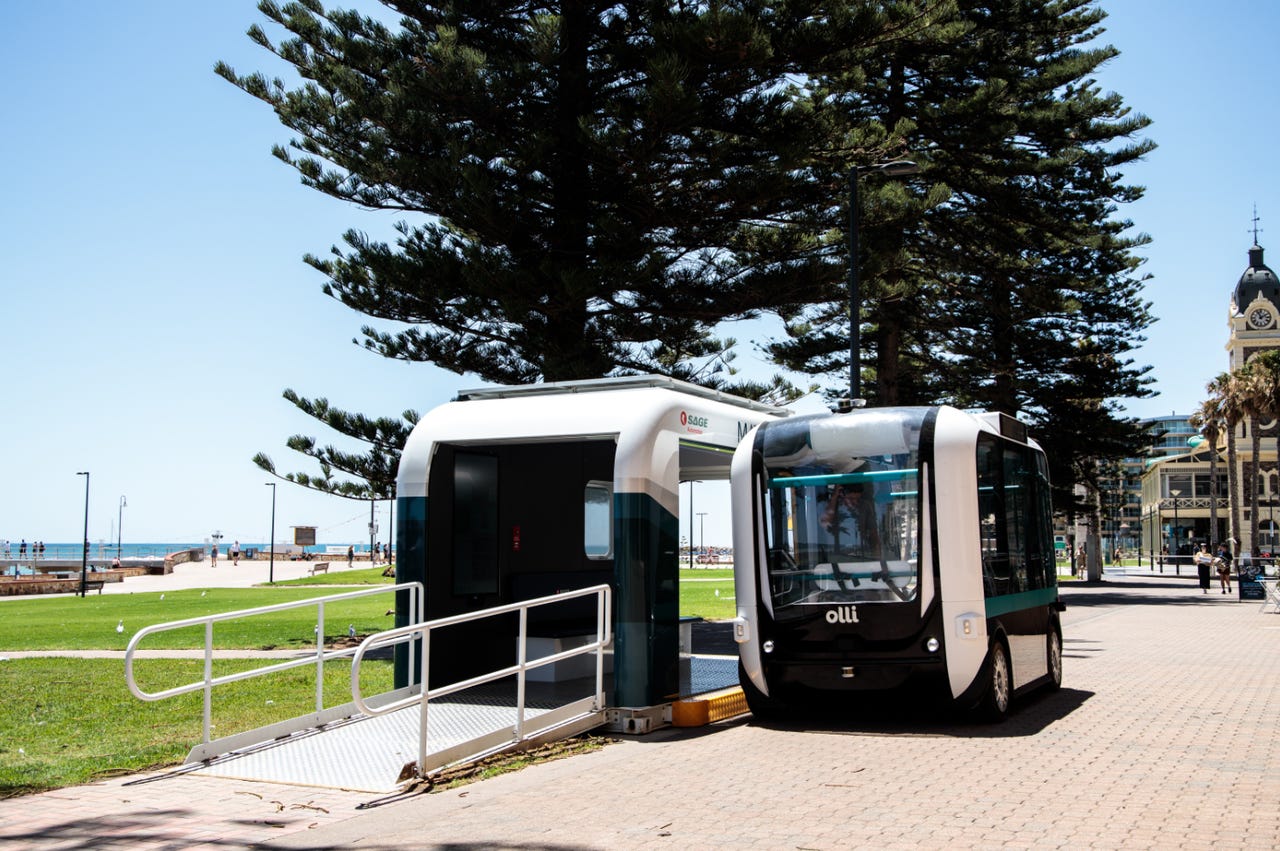South Australia kicks off six month driverless shuttle trial


The South Australian government has launched a six month trial of a new autonomous bus and smart transit hub in Adelaide.
The trial involves a driverless shuttle, known as Olli, and two transit hubs, called Matilda. Olli will drive from Mosely Square in Glenelg to the Broadway Kiosk, and back, with a statement from SA Minister for Transport, Infrastructure, and Local Government Stephen Knoll pointing to the trial as showing how technological developments could improve the state's transport system and customer experience.
Knoll said Olli is based on military-tested tech, operating LIDAR, computer vision, and radar detection systems to provide awareness of its environment and to perform autonomous navigation.
The government has partnered with SAGE Automation, US-based Local Motors, and the City of Holdfast Bay to trial Olli and Matilda. IBM has also jumped on board to bring its Watson capabilities to the trial.
Both Olli and Matilda have an on-board human machine interface and cognition allowing them to communicate and interact with passengers, providing information about the vehicle and its surroundings.
While the driverless technology in Olli was developed by Local Motors, IBM Watson Artificial Intelligence is the platform that will interface between Olli and passengers
The Matilda transit hubs also have digital touch screens, complete with an IBM Watson Assistant interface, to provide passenger information such as real-time bus location and weather forecasts.
Olli and Matilda can both listen, respond to questions, and provide information to assist commuters. For the hearing impaired, Matilda can respond to sign language using machine learning and image recognition capabilities, and then answer via an avatar of a person signing.
According to IBM, the intelligence of Olli and Matilda comes from sensors on the bus, at the bus stop, and around the route.
"IBM Watson Assistant draws from this IoT technology to collect and analyse vast amounts of interactions and data in milliseconds. The information to passengers is shared using Cloud based cognitive computing systems," Big Blue explained.
The South Australian government previously launched a AU$2.8 million trial of driverless shuttle buses in March 2017, with the shuttles used to transport passengers to and from the airport's terminal and the long-term carpark.
South Australia had approved on-road trials of driverless cars on the state's roads after the SA government and national independent road research agency ARRB Group successfully carried out the country's first driverless car trial on Adelaide's Southern Expressway.
The November 2015 trial involved two Volvo XC90 vehicles that demonstrated automatic lane keeping, adaptive cruise control, and active queue assist.
The South Australian government at the end of last year granted permission to trial autonomous vehicles in Adelaide CBD until June 30, 2020.
New South Wales is also ramping up its driverless shuttle efforts, completing the first passenger trip on its Driverless Smart Shuttle at Sydney Olympic Park in September.
The Navya shuttle is considered a level four, highly autonomous vehicle designed to carry up to 12 passengers. It can travel up to 40kmph in autonomous mode, with features including front and rear cameras, LIDAR, GPS technology, and autonomous emergency brakes.
Similar efforts are also underway in the country's west, with Perth previously chosen as one of three cities to host a trial of Navya's electric, driverless fleet, run by the Royal Automobile Club (RAC) of Western Australia and the WA government.
RELATED COVERAGE
Australia to draft new laws allowing autonomous vehicles
Nationwide legislation is expected to be in place come 2020.
Canberra stands up AU$9.7m Transport Office to prep for autonomous vehicles
The Office of Future Transport Technologies will also take a leadership role across state and territory initiatives.
Transport Commission concerned over government access to citizen vehicle data
The National Transport Commission is probing whether current privacy and information access frameworks are going to be adequate when automated vehicles take to Australian streets.
Will human drivers always be the weak link when sharing the road with autonomous vehicles? (TechRepublic)
A collision between a self-driving shuttle and a human-driven truck in Las Vegas shows the inevitability of accidents, and who is more likely to be at fault, as we share the road with robots.